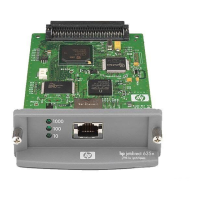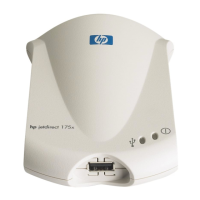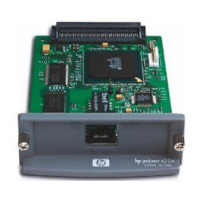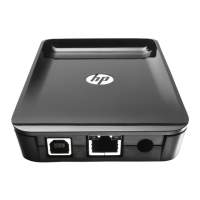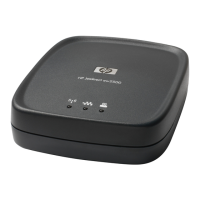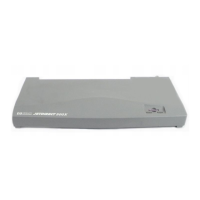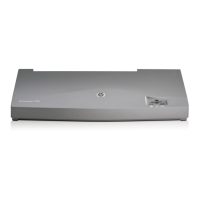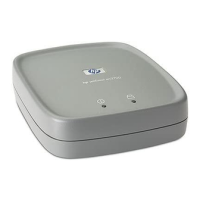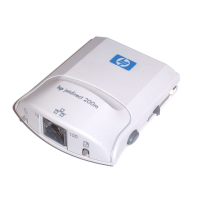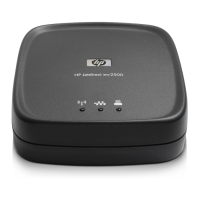36 TCP/IP Configuration EN
Using BOOTP/TFTP
BOOTP (Bootstrap Protocol) and TFTP (Trivial File Transfer
Protocol) provide a convenient way to automatically configure the
HP Jetdirect print server for TCP/IP network operation. When
powered on, the Jetdirect print server sends a BOOTP request
message onto the network. A properly configured BOOTP server
on the network will respond with a message that contains basic
network configuration data for the Jetdirect print server. The
BOOTP server’s response may also identify a file that contains
extended configuration data for the print server. The Jetdirect print
server downloads this file using TFTP. This TFTP configuration file
may be located on the BOOTP server, or a separate TFTP server.
BOOTP/TFTP servers are typically UNIX or Linux systems.
Windows NT/2000 and NetWare servers can respond to BOOTP
requests. Windows NT/2000 servers are configured through
Microsoft DHCP services (see Using DHCP
). However, Windows
NT/2000 systems may require third-party software for TFTP
support. For setup of NetWare BOOTP servers, refer to your
NetWare documentation.
Note If the Jetdirect print server and BOOTP/DHCP
server are located on different subnets, IP
configuration may fail unless the routing device
supports “BOOTP Relay” (allows the transfer of
BOOTP requests between subnets).
Why Use BOOTP/TFTP?
Using BOOTP/TFTP to download configuration data has the
following benefits:
●
Enhanced configuration control of the HP Jetdirect print server.
Configuration by other methods, such as a printer control panel,
are limited to select parameters.
●
Ease of configuration management. Network configuration
parameters for the entire network can be in one location.
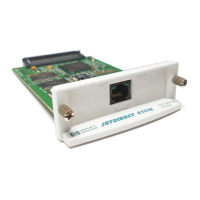
